Bordeaux 2015 from bottle: Conclusions
Posted on March 20, 2018

Very good to great
By Panos Kakaviatos for wine-chronicles.com
20 March 2018
Dear readers, pretty much all my notes on Bordeaux 2015 from bottle – many wines assessed since late November last year – are online. Including, finally, some splendid wines from Sauternes and Barsac.
For a quick look at each section, here the links to click:
Pomerol (recently updated) – Saint Emilion – Grand Cercle – Cru Bourgeois – Margaux – Saint Julien – Pauillac – Saint Estephe – Graves/Pessac-Léognan – Fronsac Focus (I mean, do you want QPR, here is your QPR!) – Sauternes/Barsac
Some are hyping the vintage as the next best thing since sliced bread, and retailers love using big scores to sell wine. Nothing wrong with that. I’m “guilty” too, for hyping the vintage, but I try to be realistic, so you do not get that many inflated numbers from me.
Having said this, 2015 is a very good to great vintage.
It depends on where you are, which appellation, and which producer, to find greatness. Of course some of the most expensive wines are great (Petrus, Lafleur, Margaux among others) but not all, so you should not just choose wines by (lofty) price.
Further comparisons with 2014
Some like to say that 2015 is the best since 2010. In many ways, sure. But it ain’t that simple. Much truth comes from longtime Bordeaux critics, like Jean-Marc Quarin, who says that 2014 can be comparable to 2015. His conclusion on 2015? Here en français:
La poursuite de mes dégustations révèle que certains 2015 ne dépassent pas les 2014. Or, les 2014 sont moins chers ! C’est le cas dans le Médoc entre Saint-Julien et Saint- Estèphe. Plus au sud, en descendant vers Margaux et le haut-médoc, il a moins plu en septembre et la situation varie. Je savais les Saint Estèphe 2015 moins réussis que les 2014 . Eh bien ! à Pauillac et St Julien certains 2014 font jeu égal avec les 2015…
Basic translation:
The continuation of my tastings reveals that some 2015s do not exceed the 2014s. Furthermore, the 2014s are less expensive! This is the case in the Médoc between Saint-Julien and Saint-Estèphe. Further south, down to Margaux and Haut-Médoc, it was less rainy in September and the situation varies. I knew that the Saint Estèphe 2015s are less successful than the 2014s. In fact, in Pauillac and St Julien, some 2014s are equal to the 2015s … Read More
Alsace 2016: the paradoxical vintage
Posted on March 19, 2018

Deceptively soft spoken Zind-Humbrecht
19 March 2018
By Panos Kakaviatos for wine-chronicles.com
Another year, and another chance to taste the fine wines crafted at Domaine Zind Humbrecht.
Known to produce some of the best Alsatian wines sold in both France and in international markets, Domaine Zind-Humbrecht also offers a “bird’s eye” view of each vintage in March with a very well organized tasting along with detailed vintage reports.
As you can read here, 2016 is “extremely contrasted.”
A mild and wet winter and spring allowed for a fertile bud break, but also caused disease problems (mildew). Summer and the ripening period to the harvest were arid and warm.
2016 thus “strangely” combines the characteristics of an early and late ripening vintage.
“There was a big bud break, with lots of clusters,” explains owner Olivier Humbrecht in the video below.
Yet with drought conditions in August – that threatened younger vines and vines on lighter soils – berries stayed very small, with a high ratio of skins to juice.” In the end it was “paradoxical” because while the grapes were ripe, they were also lower in alcohol: “We harvested relatively late, with much less sugar and alcohol than usual,” Humbrecht says. So there is a lot of wine with “beautiful, ripe aromatics but with lower alcohol,” often “between 12 and 13 percent,” he explains.
Splendid Sauternes 2015
Posted on March 12, 2018

By Panos Kakaviatos for wine-chronicles.com
12 March 2018
Having tasted through some 2015s with Jane Anson, I can only agree with her assessment (and that of Ian d’Agata) in Decanter that in 2015, Sauternes are “some of the highest scorers, along with Pomerol and St-Emilion.” Ian adds: “It’s an outstanding vintage, with many fleshy, rich wines but with good acidity levels so as to avoid coming off as heavy or cloying.”
As Sauternes expert Bill Blatch has noted: “The style of these wines is of course very rich, but, with a few notable exceptions, less absolutely sweet than the 05s or the very powerful ’09s very generally,” he said.
And the average sweetness for the crus classés of the ’15s ended up at around 130g/l rather than 140-150 for the ’09s – and that is a positive statistic, explaining a superior balance for Sauternes and Barsac in 2015.
Sure, they seem softer and have slightly less acidity than the ’14s, but this is hardly a problem as my tasting notes reveal.
With the exception of the two final wines, below, these were tasted as part of the UGCB tour in January, in Washington D.C. and New York City.
Château de Fargues: A tour de force and a top Sauternes in 2015. More than fulfilling its promise from barrel! Aged in about 30% new oak, this wine exudes so much fruit driven freshness and ripeness in such an elegant manner, one almost forgets that it is a “sweet” wine. Certainly the spicy notes from the botrytis lend much appeal, but I love the pure expressions of white stone fruit. You also get exotic fruit from the vintage, lending a multidimensional aspect. A generous de Fargues, with plenty of density, tension and vivacity. Do not hesitate to seek this out. 96/100. Read More
Saint Emilion 2015: Changing Tides
Posted on March 11, 2018

2015 from bottle shows return to freshness, if not for all estates …
By Panos Kakaviatos for wine-chronicles.com
11 March 2018
When assessing more 2015 Bordeaux from bottle at the UGCB tasting in New York, I was struck by just how much fresher some Right Bank wines especially tasted: wines that had not too long ago come across as too heavy handed or exuding too many oak-derived flavors.
Readers know that I have never been a fan of drying, oak-derived tannin in Bordeaux, pretty much since I started writing about my experiences with Bordeaux wines back in 1998. Saint Emilion had seen too much of that, reaching a kind of sad “heyday” with the 2009 and 2010 vintages.
Thankfully, this trend is being reversed – at least to some extent.
With reference to the 2015 vintage, I report happily that several top Saint Emilion member châteaux of the UGCB have been changing their style for the better. This was proven yet again at the 2015 tasting tour at the magnificent Cipriani in New York City earlier this year, where I discovered fine examples of freshness from both Château Clos Fourtet and Château Grand Mayne, which in the first 2000s decade had been too often a bit too heavy and oaky.
Long before it was a fashion to do so – and like a few other critics and writers – I have long railed against the excesses of new oak combined with high alcohol merlot, which leaves tasters with the unpleasant sensation of drying oak tannins on the finish.
Jean-Claude Berrouet, the long time winemaker at Petrus, decried this tendency, time and again, and seemed sometimes out of fashion. But he was correct. Another marvelous estate – ok, also very pricey – is Lafleur, which can use up to 20 percent new oak for aging its Merlot. It never had to deal with such criticism… Read More
Bordeaux 2015 from bottle, part 2
Posted on March 11, 2018

Pomerol isn’t just about the stars:
Update with more tasting notes!
By Panos Kakaviatos for wine-chronicles.com
11 January 2018 / 11 March
Just an update folks from this January post … Just a few more tasting notes directly below, in alphabetical order. Proving again how good Pomerol is in 2015.
UPDATED TEXT (MARCH 2018)
Château Le Bon Pasteur: What can I say? This is a modern style in a very good sense as it exudes opulence and even a heady quality, but it is balanced without drying on the finish (as can be in some other vintages). Basically, a delicious wine with a certain serious density for the longer run. Bravo! 93/100
Château la Cabanne: I like the fresh, ripe fruit aspects from this wine, which is tasty and medium bodied. But the finish is just a tad fleeting. At this price point, once can do better. 88/100
Château Clinet: I am perplexed here, as I think I liked this wine more from barrel with a score range between 92 and 94. The slight hardness seems more pronounced from bottle, with a certain – and this is positive – serious precision. There is power, too, reminding me a bit of some of the rather “armored” Moueix wines in this vintage. I would buy a six pack and forget in the cellar, as the baby fat from barrel is now gone, leaving behind quite a bit of structure. Wait n’ see. 92/100
Château Gazin: My initial reaction, when tasting at the UGCB in New York in January this year? Just terrific. Really, the aromatics are gorgeous, with deep violet floral aspects as well as dark ripe fruit. The mid palate is juicy yet dense. Sure, there is some oak derivation but not the type that will overcome the fruit over time. At least I am betting on the positive side, here, and go out on a (bit of a) limb perhaps with a very high score. Perhaps also because the price is not as high as some other prestigious neighbors so this constitutes a “relative bargain” for the already expensive appellation. A blend of 95% Merlot and 5% Cabernet Franc, and about 14.5% alcohol. 96/100.
Château La Pointe: Hats off to consultant Hubert de Boüard and general manager Eric Monneret, whom I had met when he was (a while back) at Château Raymond-Lafon in Sauternes. Their work to fine tune this estate has paid dividends reaching a sort of apotheosis in the 2015 vintage, perhaps the best I can recall, this blend of 85% Merlot and 15% Cabernet Franc clocking in at about 14.5% alcohol. A pure pleasure to drink: at once rich, savory, juicy and just very good. An example of buying “petits châteaux dans un grand millésime” … Worth buying for anyone seeking quality Pomerol for a moderate price. 92/100
EARLIER TEXT
Since I already had covered much of the Médoc last month, here, where Margaux shined brightest, now we turn mainly to the Right Bank. As expected from barrel tastings, the star of the Right Bank for 2015 is confirmed: Pomerol.
In tastings organized at individual estates, at the Libourne offices of pioneering Pomerol producer Établissements Jean-Pierre Moueix, and at Château de Pressac in Saint Emilion, where I tasted many wines whose estates are members of the Grand Cercle, I am convinced that savvy consumers can find economically priced 2015s from Pomerol, relatively speaking, as well as divas whose prices are scraping ever higher skies.
Of course the choice is somewhat limited with 150 estates – packed into just under 800 hectares in an area roughly three kilometers wide by four long – but that’s my work for you, dear reader: picking out excellent price/quality ratios, even from this cream-of-the-Bordeaux-crop appellation ?. Of course my notes include the stars, as well.
Long considered a sub appellation of Saint Emilion, Pomerol was granted independent status only in the early 20th century. The gently rolling plateau of Pomerol – 19 miles northeast of Bordeaux and two miles from the city of Libourne – slopes towards the Isle river valley and its confluence with the Dordogne. Although soils vary (not all Pomerol is created equal to be sure), you can find less expensive Pomerol that is being made better than ever before, according to my experience in tasting some of the less heralded estates over the last 10 years or so.
Indeed, trade representatives notice as well: “The less expensive brands work especially well for restaurants, explains Stephan Maure of the Vino Strada bistro in Strasbourg, France. “They bear the name of Pomerol and convey the refinement of the appellation, but do not cost an arm and a leg,” he stressed.
Rest assured that Bordeaux 2015 from bottle features many excellent Right Bank wines outside of Pomerol, from Saint Emilion to be sure, but also excellent wines from satellite appellations, notably Fronsac, which rather kicked ass in 2015. I will get to these in Part 3, focusing on Saint Emilion and many satellite appellations.
Part 4 will be dedicated to the Graves region, red and white, and Part 5 will focus on Sauternes and Barsac.
Later this month, in New York City and in Washington D.C., I will taste more Saint Emilion and Pomerol wines at the UGCB tour tastings, and will update this page, with a few more Pomerols, so be ready for an update at the end of January, along with Parts 3, 4 and 5.
For now, without further ado, let’s get to the tasting notes, starting with my favorite 2015 Right Bank appellation. As usual, wines I liked in particular are in bold. Even more are red and bold. And if underlined as well? Wine nirvana! Read More
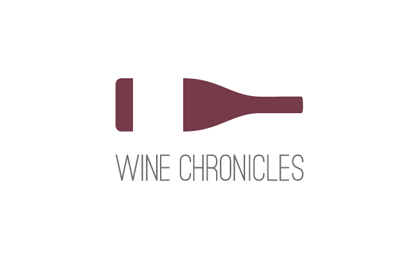 Wine Chronicles
Wine Chronicles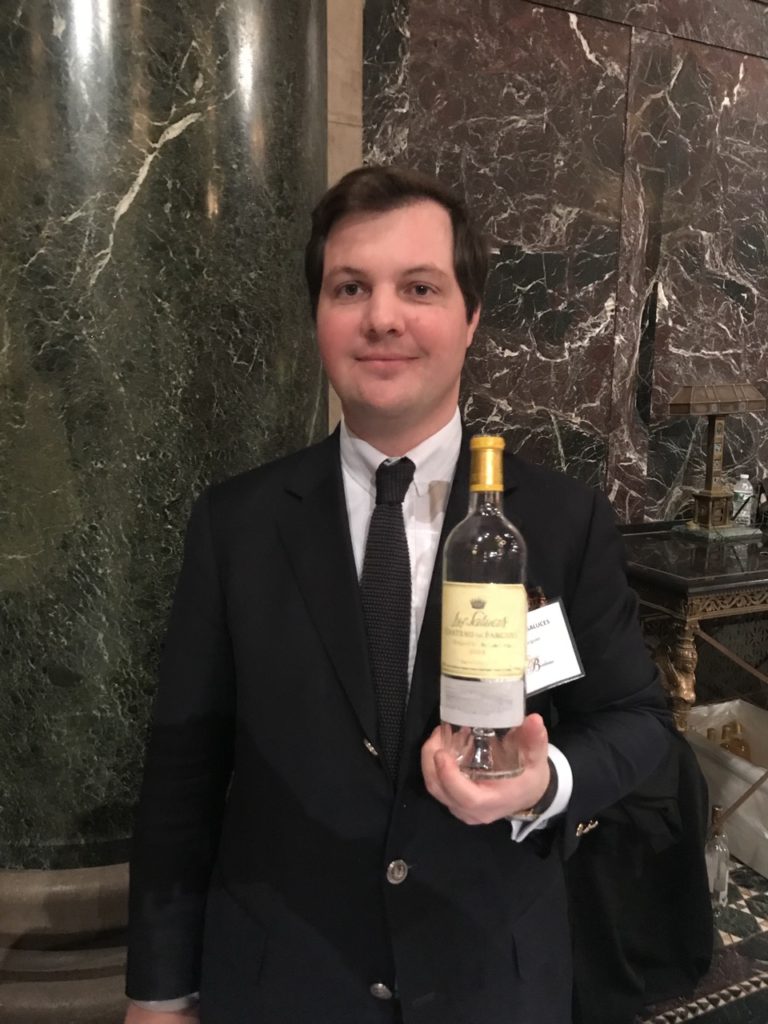
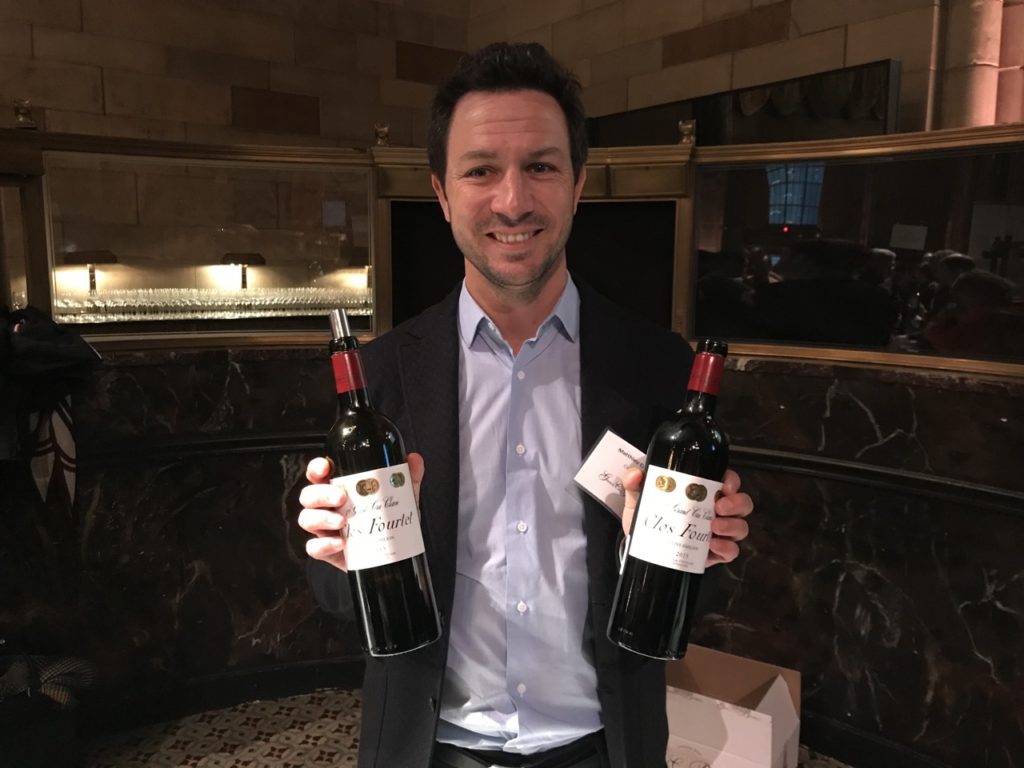
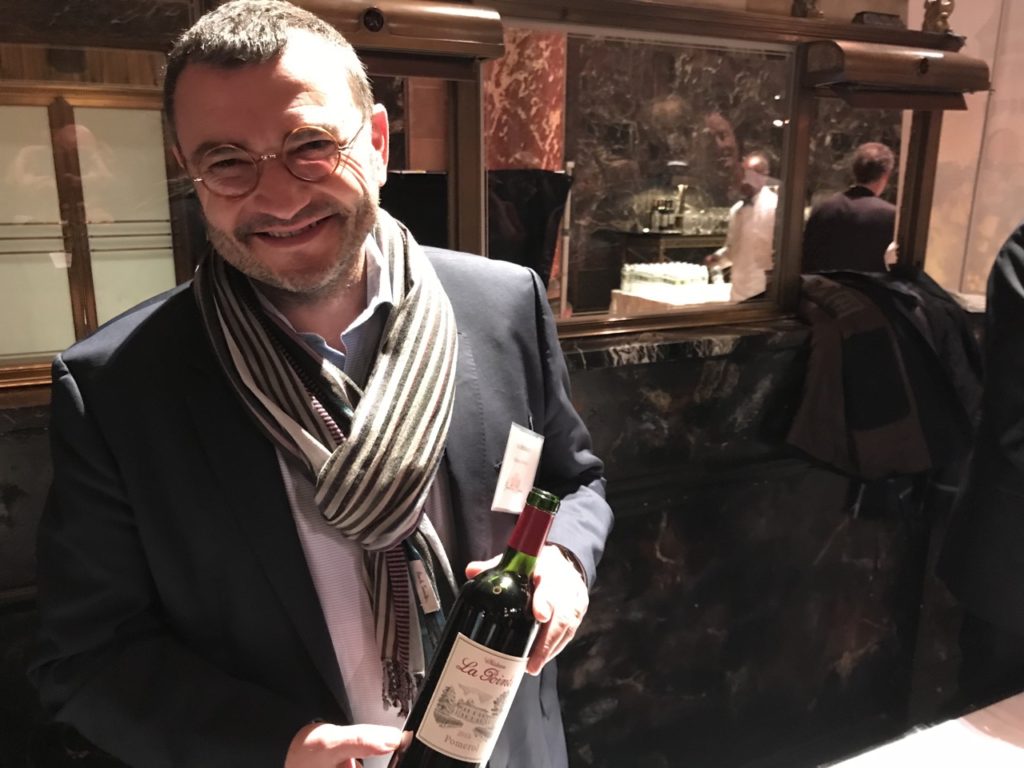
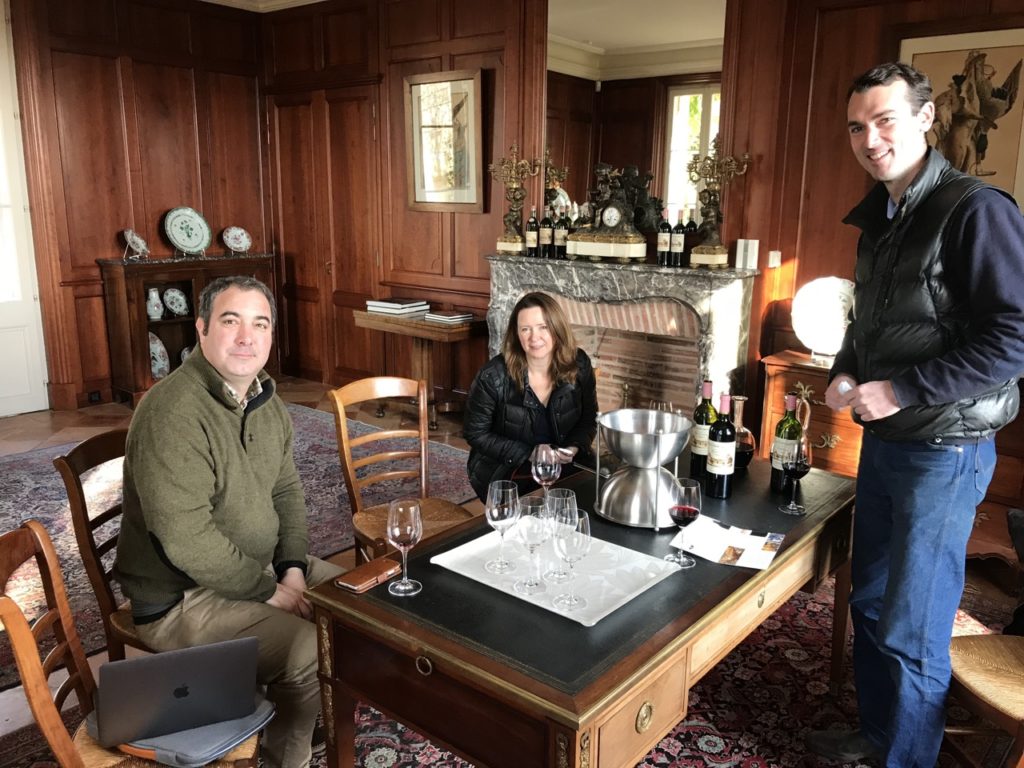
Recent Comments